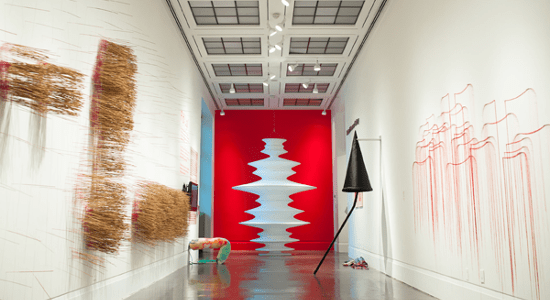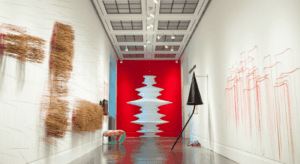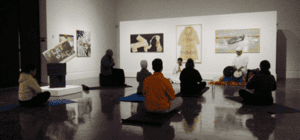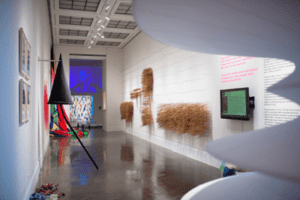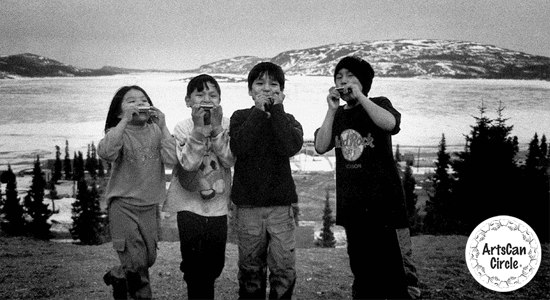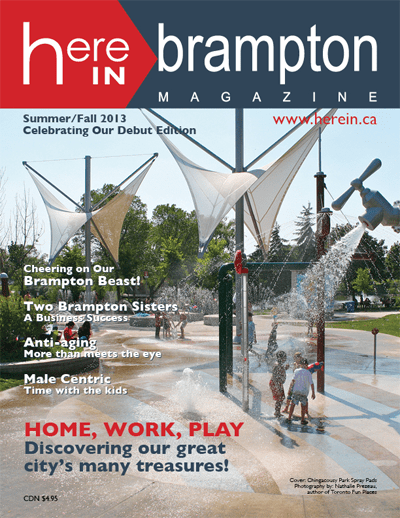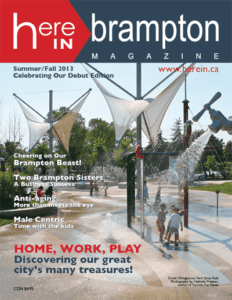
Contrary to the stereotype, members of the Brampton Quilters’ Guild do not sit around a quilting frame sewing by hand at their monthly meetings. Rather, the 100 current members—grown from 14 at its founding in 1987 to as high as 160 at one time—get inspiration from quilting projects, quilting techniques, colour combinations, patterns, fabrics from guest speakers; browse the Guild’s extensive library; participate in workshops taught by expert quilters; take time to sew many items that are donated to charities; and socialize around food and drink, sharing tips and other information related to a shared love of quilting in all its forms.
There may have been a time when quilters only made bed quilts, but this is no longer true. Now there are a wide range of fabrics, battings, and machines specifically designed for quilting. A dedicated Community Projects committee makes kits to sew the items, stores the items donated throughout the year and organizes the donations of items made by the Guild’s members to various charities at Christmas. To date, they have made children’s cuddle quilts for shelters, placemats for Meals on Wheels, lap quilts for seniors, gift bags and tote bags for the Elizabeth Fry society, pet mats for the Brampton animal shelter and, as part of the perinatal bereavement program at Brampton Civic Hospital, memory quilts for couples or families. On invitation by Fashion Arts teachers, the Guild has also run quilting workshops in Brampton high schools.
Traditionally, quilting was a style of sewing cotton and wool and cutting up pieces of worn out fabrics to create new, three-layered quilts to keep families warm. Today, all items made by Guild members for donation are made from new cottons. The art form has evolved over time so that nowadays, there are many fiber-artists using quilting techniques to make abstract wall-hangings, patchwork and other creative pieces.
Quilting in Canada started as a life necessity of British and American immigrants and is considered an international art form, more than the public might perceive. Quilting traditions exist in Australia, Britain, Europe, Japan and some African countries. As long-term residents may know, the Town of Brampton was first settled by Scottish immigrants and, as such, the majority of the Guild’s membership is of British and European descent who are invested in continuing that cultural heritage.
Every second year the Guild, which is a member of the Brampton Arts Council and the Canadian Quilters’ Association, hosts a Quilt Show. This is when members have the opportunity to showcase quilts and quilted items they have made including large bed-quilts, wall-hangings, post-card sized items, wearable pieces and bags. Some members choose to sell their items, while the majority create items for personal use and are only interested in exhibiting. The next Quilt Show is planned for early May 2015.




